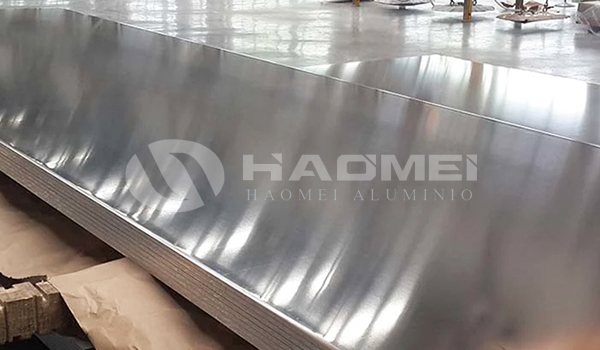Reasons for uneven film thickness of aluminium anodizing sheet plate
April 20, 2020
The uneven thickness of the anodized film of aluminum alloy, occurring frequently in production,seriously affects the subsequent electrolytic coloring and sealing effect of an aluminium anodizing sheet plate. The causes for this includes inappropriate solution temperature, effective area, contact state and sulfuric acid concentration etc.
The temperature of the anodic oxidation liquid has an important influence on the uniformity of the film thickness. A high temperature will accelerate the dissolution rate of the anodic oxidation film and make the film thinner. In contrast, low temperatures make the film thicker. Therefore, the anodizing reaction should be carried out at a low temperature. The production is accomplished by heat exchange between cold water and the bath liquid that is drawn back to the oxidation tank after passing through the heat exchanger. Due to the relatively large volume of the oxidation tank, the circulation of the tank liquid is insufficient, and the distribution of the drawn back tank liquid is uneven, which will cause a temperature difference in the oxidation tank liquid. This eventually leads to uneven thickness of anodizing film of an aluminium anodized sheet.

Whether the anodized film of a sheet is uniform or not relates closely to the corresponding cathode area. The large area of the cathode makes the current density distributed in various parts of the aluminum piece uniform, so the film thickness is also uniform. In the production of horizontal lines, the film thickness of the same part a sheet is sometimes low, which is likely caused by loosening or even falling off of the cathode plate.
In the actual production process, there are other reasons that may cause the uneven thickness of the oxide film of an anodized aluminum sheet. The poor contact or insufficient contact area between the fixture and the sheet will make the oxide film incomplete or absent at all. Big changes of sulfuric acid concentration, making the k in the empirical formula for calculating the thickness of the oxide film (δ = kIt) inaccurate, leads to inconsistent oxide film thickness, too.
In spite of complexity of the reasons, the film evenness of aluminium anodizing sheet plates can be ensured as long as the possible causes above are solved successively.


 Nydia
Nydia
 Sales Manager
Sales Manager